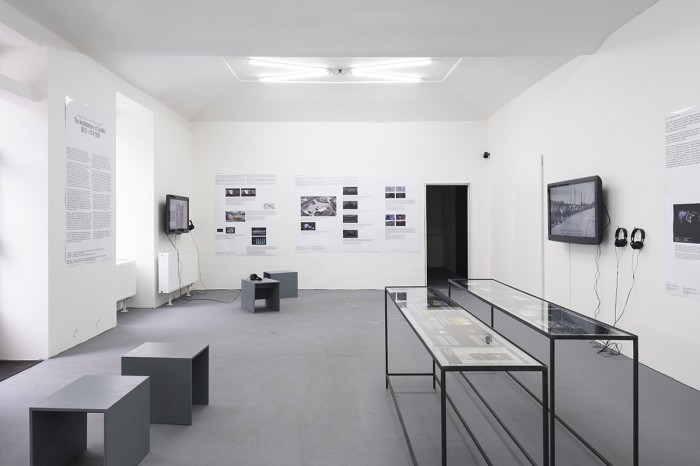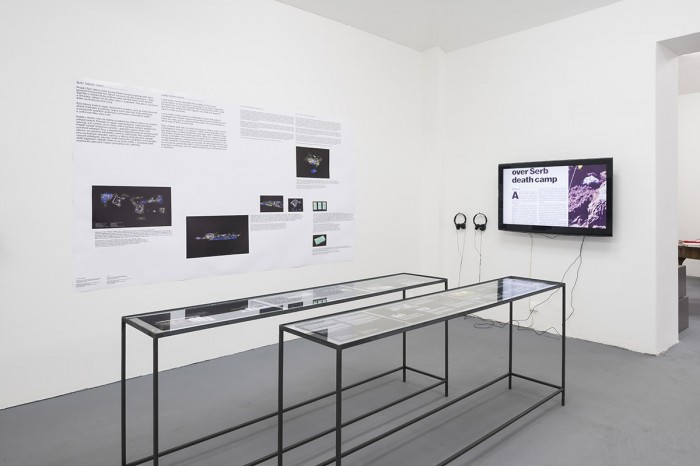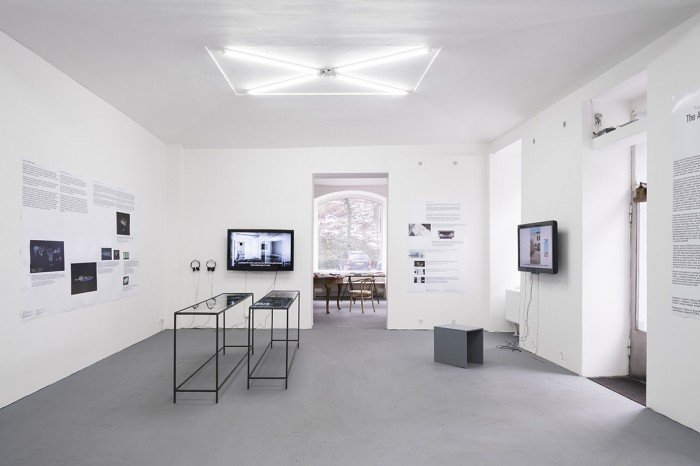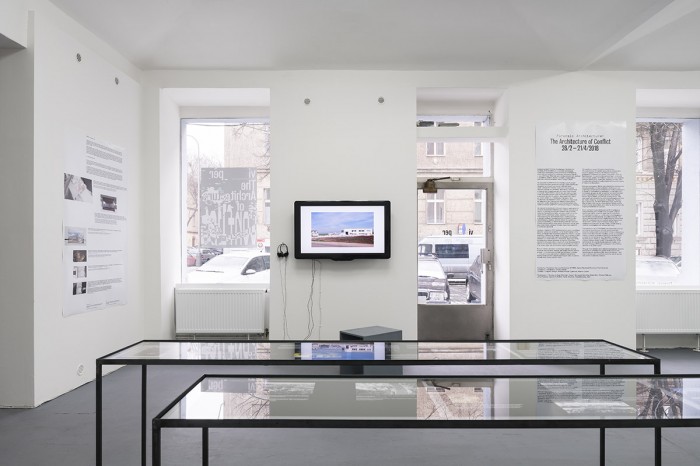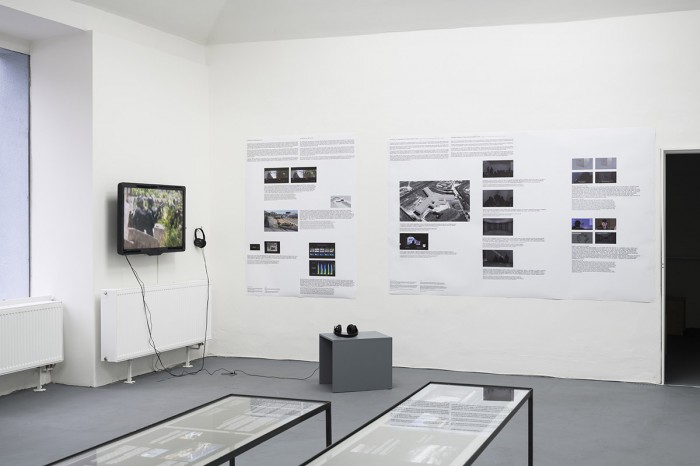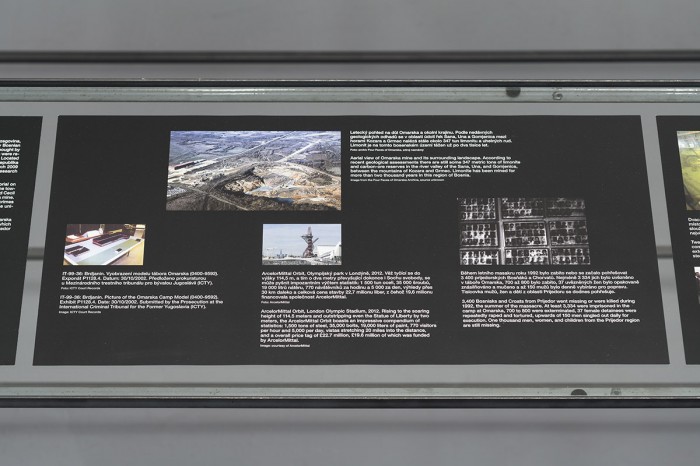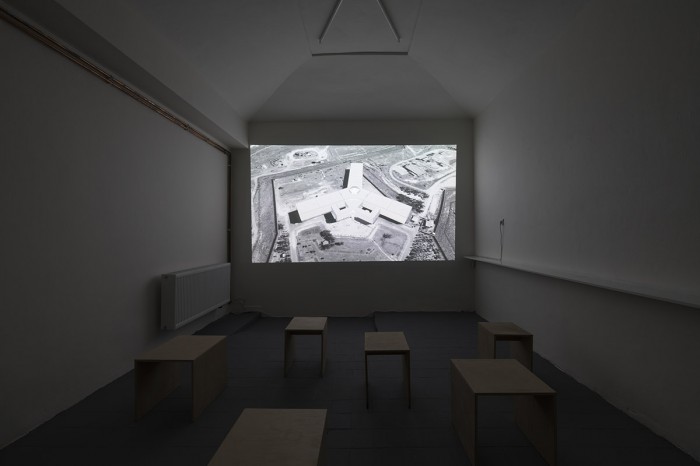Forensic Architecture: The Architecture of Conflict
{~ '2018-02-28 00:00:00' | amDateFormat: 'D/M' ~}–{~ '2018-04-21 00:00:00' | amDateFormat: 'D/M/Y' ~}
Curator: Irena Lehkoživová, Sarah Nankivell

The exhibition project Forensic Architecture: The Architecture of Conflict will present an independent research agency Forensic Architecture based at Goldsmiths, University of London. Founded in 2010 by Eyal Weizman, it is an interdisciplinary team consisting of architects, artists, filmmakers, journalist, data analysts, software developers, scientists, lawyers, activists, and an extended network of collaborators from a wide variety of fields and disciplines.
Forensic Architecture (FA) is committed to the development and dissemination of new evidentiary techniques, and undertakes advanced architectural and media investigations on behalf of international prosecutors, human rights and civil society groups, as well as political and environmental justice organisations, including Amnesty International, Human Rights Watch, and the UN, among others. They have been commissioned to conduct investigations all over the world, including, for example, in Belgrade, Pakistan, Syria, Guatemala, the West Bank and Gaza, examining sites of internment camps, drone strikes, torture centers, environmental degradation, and violence resulting from the ongoing Palestinian occupation.
Tools and techniques developed by FA for analysing and presenting acts of state and corporate violence and human rights violations across the globe gave rise to a new form of investigation based on combination of criminalistics, architectural, archaeological, and other methods. The group uses architecture as a methodological device with which to investigate armed conflicts and environmental destruction, and to cross-reference multiple other evidence sources such as new media, remote sensing, material investigation and witness testimony.
This exhibition at VI PER Gallery introduces the practice of Forensic Architecture through several selected projects: Living Death Camps, a collaborative project – consisting of ‘Staro Sajmište: The Inverted Horizon’, and ‘Omarska: Memorial in Exile’ (both 2013) – that describes the condition of two concentration camps in former Yugoslavia; Nakba Day Killings (2014), a report on the killing of two Palestinian teenagers by Israeli forces in Beitunia, Palestine; Saydnaya: Inside a Syrian Torture Prison (2016), a reconstruction of the architecture of a secret Syrian detention centre; and Al-Jinah Mosque (2017), an investigation into a US-led airstrike in Al-Jinah, Syria.
Through their detailed and critical investigations, Forensic Architecture presents how public truth is produced – technologically, architecturally, and aesthetically – and how it can be used to confront authority and to expose new forms of state-led violence.
Installation views: © Zdeněk Porcal, Studio Flusser
Reviews:
Alžběta Medková, Zjistit podobu tajné syrské basy i shořelé textilky v Pakistánu. Jak pracují forenzní architekti?, Radio Wave, March 1, 2018 (Czech only).
Jana Pavlová, Když rány vracejí úder, Art+Antiques, 2018, no. 3, pp. 52–54 (Czech only).
Martin Vrba, Angažovaná forenzní věda: Architektura jako nástroj politického odporu, A2, 2018, no. 7, p. 14 (Czech only).
Vojtěch Märc, Kriminálka Goldsmith, artalk.cz, April 9, 2018 (Czech only).
